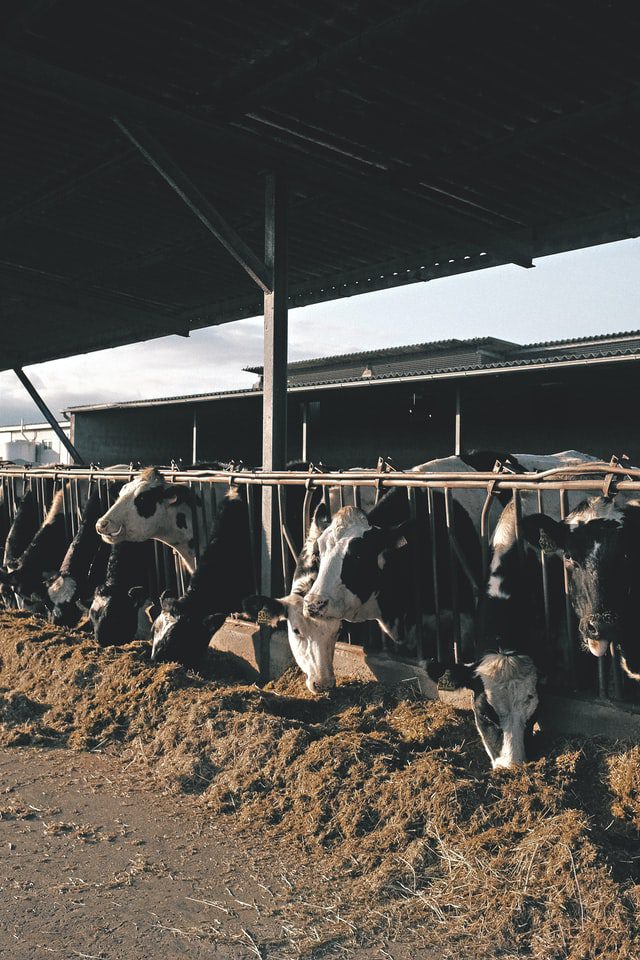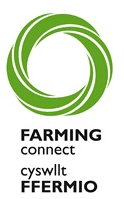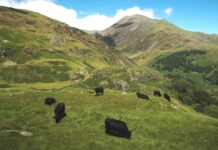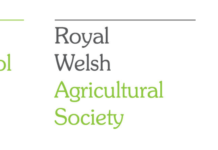Using multiple milk fever prevention strategies is paying dividends at a Carmarthenshire dairy farm.
Iwan Francis, who produces milk on a split block calving system at Nantglas, Talog, had experienced high levels of milk fever in his herd around calving.
Through his project work as a Farming Connect demonstration farmer, he introduced a series of measures for magnesium supplementation pre-calving, as advised by vet Kate Burnby.
Forages with low potassium, produced later in the season and on ground with lower fertiliser inputs, were produced as feed for dry cows. Ms Burnby, a vet specialising in cow fertility, told farmers attending a recent Farming Connect open day at Nantglas that ideally this forage should come from more mature leys and grasses.
Mr Francis adds a measured amount of magnesium chloride to the drinking water of his dry cows daily. To overcome the issue of autumn-calving cows drinking less water at grass, he now only calves the heifers and second calvers at pasture. He houses the rest of the herd for two weeks before calving, and feeds them silage.
As this feed is drier than grass, it encourages the cows to drink more of the magnesium-treated water. Cows considered to be ‘high-risk’ are also given magnesium boluses a couple of weeks before calving.
The ‘belt and braces’ approach to preventing milk fever has been successful, with very few cases, said Mr Francis. This year, only five cows required calcium treatment after calving, compared to 14 the previous year, and all recovered very quickly with treatment – there were no ‘downer’ cows or losses.
Low levels of magnesium had also been identified as the antagonist in a recurring problem with pica – a condition that had been causing Mr Francis’ cattle to eat large quantities of soil, stones and other objects in the spring and early summer. To better understand the issue, the available nutrients and minerals in the diet were analysed.
Pica is often assumed to be link to a phosphorous deficiency, but the monitoring at Nantglas had also identified magnesium as the antagonist. In the fresh grass samples analysed, magnesium levels were very low, and there were also low levels of copper, zinc, selenium and cobalt.
Grassland and soil consultant Nigel Howells, who has been advising on this project, said this situation corresponded with the mineral grass analysis on other farms he had worked with, where problems with pica had also been experienced.
Soil magnesium and phosphorous levels at Nantglas in the samples analysed were at index 2; for the soil to be at its most productive, the level should ideally be 3, said Mr Howells.
The soil was also found to have a high residual level of sulphur. Mr Howells advised farmers to consider the type of fertiliser they apply, since some contain sulphur.
The calcium-to-magnesium balance in the soil at Nantglas was also investigated, and showed a balance of 15:1, compared to the ideal of 7:1.
Farmers were advised to discuss both macro and trace element supplementation with their farm vet. This should provide a route to balancing out deficiencies until the correct balance can be achieved in grass.
This project has received funding through the Welsh Government Rural Communities – Rural Development Programme 2014-2020, which is funded by the European Agricultural Fund for Rural Development and the Welsh Government.
Farming Connect is delivered by Menter a Busnes and Lantra Wales and funded by the Welsh Government and the European Agricultural Fund for Rural Development.
Help keep news FREE for our readers
Supporting your local community newspaper/online news outlet is crucial now more than ever. If you believe in independent journalism, then consider making a valuable contribution by making a one-time or monthly donation. We operate in rural areas where providing unbiased news can be challenging. Read More About Supporting The West Wales Chronicle



























